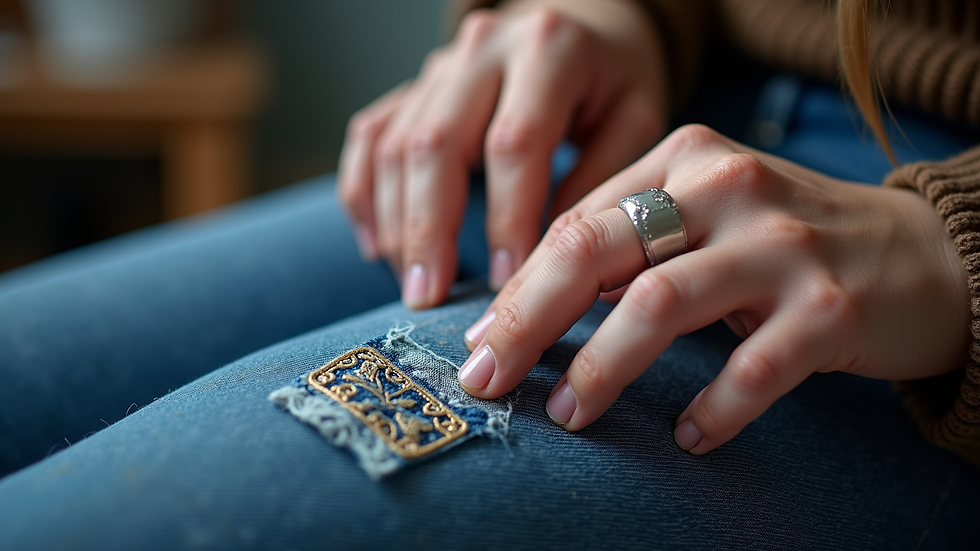Reducing Textile Waste Effectively
- Wear It Again
- Sep 29
- 3 min read
When I first started exploring ways to live more sustainably, I quickly realised how much textile waste contributes to environmental problems. Clothes pile up in landfills, and the fashion industry is one of the biggest polluters worldwide. But the good news is that we can all play a part in changing this. By adopting smart textile sustainability strategies, you can help reduce waste and support a circular economy. Let me guide you through practical steps that make a real difference.
Embracing Textile Sustainability Strategies in Your Wardrobe
The journey to sustainability begins with understanding how your choices impact the environment. Textile sustainability strategies focus on extending the life of clothing, reducing demand for new production, and encouraging responsible disposal. Here are some effective ways to start:
Choose quality over quantity: Invest in well-made pieces that last longer. This reduces the need to replace items frequently.
Buy second-hand or vintage: Pre-loved clothes have a smaller environmental footprint. They also add unique style to your wardrobe.
Care for your clothes properly: Follow washing instructions, avoid over-washing, and repair minor damages to extend garment life.
Donate or sell unwanted clothes: Instead of throwing away, pass your clothes on to others who can use them.
Support brands with sustainable practices: Look for companies that prioritise eco-friendly materials and ethical production.
By incorporating these strategies, you not only reduce waste but also encourage a more mindful approach to fashion.

How to Implement Textile Sustainability Strategies in Daily Life
Putting these strategies into practice can feel overwhelming at first, but breaking them down into manageable steps helps. Here’s a simple plan you can follow:
Audit your wardrobe: Take stock of what you own. Identify items you rarely wear or no longer need.
Create a maintenance routine: Set aside time monthly to mend clothes, remove stains, and organise your wardrobe.
Shop consciously: Before buying, ask yourself if you really need the item and if it fits your style and lifestyle.
Explore second-hand options: Visit local thrift shops, online marketplaces, or platforms specialising in pre-loved fashion.
Recycle textiles responsibly: When clothes are beyond repair, find textile recycling points or programmes in your area.
This step-by-step approach makes sustainability achievable and rewarding.

What is the Biggest Contributor to Textile Waste?
Understanding the root causes of textile waste helps us target the problem effectively. The biggest contributor is fast fashion - the rapid production of cheap, trendy clothes designed to be worn only a few times. This model encourages overconsumption and disposability.
Fast fashion brands often use synthetic fibres that do not biodegrade, adding to landfill problems. Additionally, poor quality means garments wear out quickly, pushing consumers to buy replacements frequently.
Other contributors include:
Overproduction: Brands producing more clothes than the market demands.
Consumer habits: Impulse buying and lack of care for garments.
Lack of recycling infrastructure: Many textiles end up in landfill because recycling options are limited.
By recognising these factors, you can make informed choices that counteract wasteful trends.

Practical Tips for Reducing Textile Waste in Your Community
Beyond personal habits, you can influence your community to embrace sustainability. Here are some ideas to get involved:
Organise clothing swaps: Gather friends or neighbours to exchange clothes, giving garments a new life.
Support local charities and thrift shops: Donate clothes and encourage others to shop second-hand.
Educate others: Share knowledge about textile waste and sustainability strategies through social media or local events.
Partner with sustainable businesses: Promote brands and platforms that focus on circular fashion, like reducing textile waste.
Advocate for better recycling services: Contact local councils to improve textile recycling facilities.
These actions create a ripple effect, making sustainable fashion more accessible and popular.
Moving Forward with Confidence and Style
Adopting textile sustainability strategies is a journey, not a one-time fix. Each small step you take contributes to a larger movement towards a healthier planet. Remember, sustainable fashion doesn’t mean sacrificing style. It means choosing pieces that tell a story, have character, and respect the environment.
By embracing second-hand shopping, caring for your clothes, and spreading awareness, you help build a circular economy where clothes are valued and waste is minimised. Together, we can transform the fashion industry and enjoy a wardrobe that feels good inside and out.
Start today by exploring options at trusted platforms and local shops. Your choices matter more than you think.
Thank you for joining me on this journey to reduce textile waste and promote sustainability. Let’s wear it again - and again - with pride.



Comments